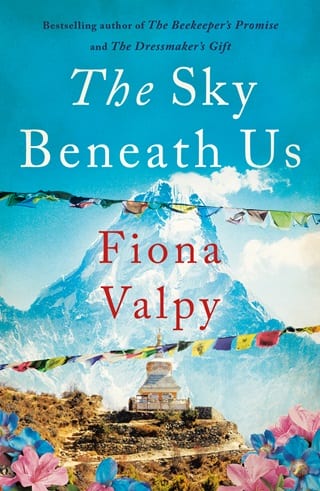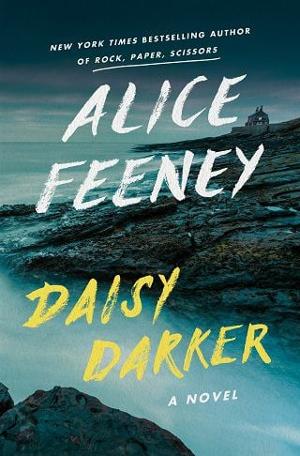Violet’s Journal
F RIDAY , 9 TH S EPTEMBER , 1927
Miss Carmichael, our botany instructor, announced this morning that we would be studying at the Royal Botanic Garden at Inverleith today – our first official visit there as her class of gardening women. In her stentorian tones, she instructed us to bear in mind AT ALL TIMES that we were ambassadors for the school and would be judged accordingly by the gardeners and keepers we were about to encounter. ‘There will be no chattering,’ she said, fixing a couple of the more talkative girls with a particularly stern look. ‘You are there to learn, remember, and some of the staff still don’t take kindly to our presence. Miss Morison has used her influence to create a partnership of sorts with the Botanics and we are privileged to be allowed behind the scenes in the Glasshouses and the Library. Do not let her down.’
We obeyed as best we could, although as we walked through the tall iron gates there were a few excited outbursts, quickly silenced by another look from our teacher. We walked in silence, two by two, along the path. My visit to the Tropical Palm House at the weekend had been as a member of the public, but now my heart beat a little faster as we entered the main building as gardening women. I was eager to see behind the scenes, coming one step closer to the famous names of horticulture, plant hunters like Forrest and Sherriff whose specimens are housed here.
Following a welcome from the Regius Keeper himself – even the redoubtable Miss Carmichael seemed overawed by his presence – we were allowed into the Library. Never have I seen such a collection! We wandered in silence amongst the shelves of books and portfolios of botanical drawings. My fingers itched with a longing for my paintbox and pencils. And then we were shown the drawers of specimens. The collection seems to take up acres, and the librarian drew forth folder after folder containing pressed leaves, flowers and seeds, each one neatly labelled with its scientific name and the descriptions of where and when it had been found. We will have access to all of this in our future visits, so I shall have ample opportunities to bring my sketchbook along and make my own drawings. A blue poppy from the Himalaya caught my eye in particular. How I long to capture that extraordinary colour on paper and send it home for Ma and Pa to see.
We emerged at last into the open air of the gardens again. It was a glorious autumn day, far warmer than it had been last Sunday, although the wind still blustered through the trees, sending more flurries of leaves tumbling, so Miss Carmichael allowed us to take our packed lunches to a secluded corner of the arboretum she knew of, away from public view.
We turned the corner and disturbed a group of men who had already claimed the picnic spot. One of them got to his feet as we approached and greeted Miss Carmichael.
‘Good afternoon, George,’ she said. ‘This is my new class of gardening women, here on their first visit.’ She turned to us. ‘Ladies, these are some of the gardeners who work hard to keep the Botanics in such a good state all the year round.’
The man nodded, muttering a greeting to us.
‘I apologise for intruding,’ Miss Carmichael continued. ‘We’ll take ourselves elsewhere and leave you to finish your lunch in peace.’
‘Och, it’s no intrusion at all,’ George replied. ‘There’s space enough for us all and the shelter this corner provides keeps the wind off. Please, make yourselves at home.’
We settled ourselves at a little distance from the men and took out the pieces we’d brought with us from our lodgings. I discovered I was suddenly ravenous after our morning’s excitements, and the egg sandwiches Mrs MacDougall had prepared for Marjorie and me became the sole object of my concentration. It was only when Marjorie nudged me and hissed in my ear that one of the gardeners seemed to be glaring at me that I looked up.
A young man sat with his back against the trunk of a red oak, a penknife and short stick in his hands. He’d been whittling at it when we arrived, his head bowed over his work. But now he had abandoned his task, distracted no doubt by the interruption. As Marjorie had observed, he appeared to be staring straight at me with a look of disdain in his clear hazel eyes and I recognised the young man I’d encountered in the Palm House on Sunday.
Mortification flooded through my veins as I recalled how I’d told him about the palmetto. No wonder he’d been annoyed. It must have sounded so condescending, and to one who knew the plants there far better than I.
Determined not to be cowed by his hostility, I smiled in recognition and raised the hand holding the remains of my egg sandwich by way of salutation.
‘Violet Mackenzie-Grant!’ snapped Miss Carmichael, having witnessed my gesture and, I suppose, interpreted it as a brazen flirtation.
A few of the gardeners laughed out loud and I saw one of the girls nudge her neighbour and whisper something behind her hand. Chastened, I dropped my eyes to my lap and felt my cheeks burn with embarrassment. But when I slid a furtive glance towards the young man again a few moments later, I saw he was smiling at me. It could have been simple amusement at my public admonishment, but I thought there was more warmth in his eyes so perhaps there was some sympathy there too.
Marjorie cut an apple in two and passed me one of the halves.
‘Thank you,’ I whispered, my gratitude not just for the apple but for the gesture of friendly solidarity.
The lads got to their feet and went back to their tasks in the gardens, leaving us to finish our lunch. I didn’t dare raise my eyes as they left, not wishing to draw more of Miss Carmichael’s disapprobation down upon myself. But one of them walked close by where Marjorie and I were sitting and something fell at my feet as he passed. Making sure no one was looking (apart from Marjorie, who witnessed the whole incident with much amusement), I reached out and picked up a piece of wood that had been whittled into the form of a palm frond, a perfect miniature facsimile of those of the palmetto.
I tucked it into the pocket of my smock. And now it sits on the bedside table in my room at The Laurels as I write this.
He appears to be a really rather extraordinary young man, that lad with the hazel eyes.
W EDNESDAY , 12 TH O CTOBER , 1927
At lunchtime today I was called in to Miss Morison’s study. We’d been working in the market garden that morning, harvesting the last of the spring-planted onions and the first of the neeps, so I kept my hands behind my back as I stood before her desk, to hide my dirt-engrained fingernails. Despite my best efforts with the scrubbing brush and carbolic soap, the rich black soil of the vegetable beds persists in clinging stubbornly to the roughened skin. Mother has sent me a jar of Hinds hand cream, with a note urging me to use it often and to wear a pair of kid gloves at night-time, in a last-ditch attempt to prevent my descent into harridan-ism. It may be effective for women who ‘do housework, play golf, and run a car or a typewriter’, as the advertisements claim, but I’m afraid it doesn’t make much of a dent on the after-effects of ploughing, digging and turning compost heaps.
Miss Morison has a stern outward demeanour but beneath it lies a deep vein of kindness. I was a little nervous as I stood before her, wondering which of my mistakes I was to be dressed down for. There’d been that incident with the insecticide for the Brussels sprouts the other day (although Marjorie agreed with me afterwards that the instructions for its dilution had been less than clear), and last week I’d bent the ploughshare on a stone when attempting to create one of the new market garden beds. But she smiled at me so warmly that I felt the tightness across my shoulders release a little as I shifted my feet on the oriental rug that is the one concession to comfort in her study, lined with its horticultural tomes.
‘How are you enjoying your time with us, Violet?’
My heart sank a little again, nerves a-flutter in case this was her opening gambit in telling me I wasn’t cut out for the course.
‘Very much indeed, Miss Morison,’ I assured her. ‘The work is hard, and I know I have a lot to learn, but I love it here.’
‘Good,’ she replied. ‘Your tutors tell me you are doing well.’ She glanced down at a note on her desk. ‘We have received a request from the Regius Keeper at the Botanics. It’s somewhat unusual, but he has mentioned you by name. It appears your proficiency at illustration has not gone unremarked. They have recently received a large number of specimens from George Forrest’s latest expedition to Tibet and there is much to be done to catalogue and illustrate them. Ordinarily, we would assign such an opportunity to one of our second-year students, but I’m afraid to say none of them has your proficiency with pencils and paint. I am prepared to let you undertake this work – and it is an excellent opportunity – but only on the condition that you make up the elements of the course here in your own time. Is that something you’d be prepared to do?’
I think I stood in flabbergasted silence for several moments, my mouth opening and closing like a landed trout, before I was able to burst out my excitement and gratitude. ‘To be one of the first people in the country to see those exotic specimens, to be able to study them and be one of those responsible for presenting them to the world ...! I’d love to, Miss Morison. And I’ll be sure to make up the course work too. Oh, thank you, thank you for this opportunity.’
She smiled again, but then quickly readjusted her expression into one of sternness. ‘Very well, Violet. But you must remember that you are representing the Edinburgh School of Gardening for Women and I expect you to behave with decorum at all times. You will be under the scrutiny of some of the most knowledgeable and influential men in British botanical circles. I hope I can trust you to make a good impression.’
I was so excited I could scarcely concentrate on this afternoon’s lectures on the propagation of herbaceous perennials. I think I shall scarcely sleep a wink tonight. I am to present myself at the Library of the Royal Botanic Garden tomorrow morning.
S UNDAY , 16 TH O CTOBER , 1927
Conscious of keeping my word to Miss Morison, I have forced myself to copy up Marjorie’s notes on pest control for brassicas before allowing time for writing up my journal today. What a week it has been!
As instructed, I made my way through the gates of the botanic gardens and up the path to the Caledonian Hall, which houses the Herbarium. I had to keep pinching myself to be sure it wasn’t a dream, that I really had been selected to help illustrate the latest findings from one of the world’s most renowned plant hunters. Despite its grand name, the hall more resembles a pretty cottage built from honey-coloured stone, its gables decorated with carved wooden filigree. I paused before the door, adjusting the leather satchel containing my art materials across the front of my coat like a protective shield, to give me confidence before knocking. The man behind the desk fixed me with a most suspicious glare when I gave him my name and said I was expected. He is clearly the type of custodian who believes it his duty to preserve the collections in his care from the prying eyes of anyone who might be termed a member of the general public. Reluctantly, he told me to take a seat and wait whilst he spoke to someone on the telephone. Whatever was said, it seemed to convince him that I really was to be allowed into the inner sanctum, because he raised his eyebrows, replaced the receiver without further comment, and told me someone would be with me shortly, before returning to the pages of the vast leather-bound ledger before him.
The silence, broken only by the loud ticking of the clock on the wall behind the man’s desk, merely served to increase my jitters. I reminded myself of the confidence placed in me by Miss Morison and the other lecturers at the School of Gardening, as well as the encouragement given to me by Mrs Hanbury in the gardens at Inverewe, and clutched my bag a little more firmly on my lap to stop myself from quaking. I told myself I deserved my place here amongst the men. And I would need a steady hand if I was to draw and paint George Forrest’s specimens.
After what seemed an eternity – although a glance at the clock told me I’d been waiting less than ten minutes – a door off to the side of the entryway opened and another man appeared. The doorkeeper stood up from his chair. ‘Good morning, Dr Kay,’ he said with some diffidence. ‘This is Miss Mackenzie-Grant, the young lady who is apparently a botanic artist.’ He glanced at me disparagingly, as if he very much doubted this to be true.
The man fixed me with an appraising look as I scrambled to my feet. ‘I’m pleased to meet you, Miss Mackenzie-Grant. We have heard good things about your skill with pencil and paintbrush. I am Francis Kay, the principal curator.’ He shook my hand with a reassuringly firm grip. ‘We are grateful to Miss Morison for sparing you to help us. Please, follow me.’
I trotted through the doorway after him, leaving the custodian to his ledgers, and entered another world entirely. I blinked as we stepped into the central hall, its walls and ceiling painted with whitewash that reflected the autumn light streaming in through tall windows. At one end, the room was lined with shelves and panelled cupboards housing the collections that had already been catalogued. Cluttered workbenches filled the central floor space and around them were piles of wooden crates, many stamped with foreign characters and covered with paper labels, recording the long and sometimes tortuous journeys they must have made to end up here in Edinburgh. Dr Kay led me to a workbench near one of the windows. As we approached, a young man who had been hunched over a desiccated-looking branch straightened up and grinned at me. I think I must have gaped at him like an idiot in return. He set aside the scalpel he’d been holding and held out his hand to shake mine.
The curator introduced us. ‘Miss Mackenzie-Grant, I believe you have already encountered Callum Gillespie. He speaks highly of your artistic skills, and it was on his recommendation that I approached Miss Morison to see if we could avail ourselves of your services.’
Regaining my composure, I replied, with what I hoped sounded like calm professionalism, ‘Our paths have crossed on occasion whilst at work in the gardens. It is a great honour that my drawings might be considered of a standard to help catalogue the new arrivals here.’ I cast a look around the room, meeting the glances of other men who had paused in their work, disturbed by the arrival of a female interloper.
Dr Kay nodded. ‘Very good. Well, I’ll leave you in the capable hands of Mr Gillespie. He can make some space and show you the specimens we’ve set aside for drawing.’
I thanked him and then set my satchel on a stool alongside the workbench, unbuttoning my coat and removing it ready to roll up my sleeves and set to work.
‘You can hang that on one of those hooks over there.’ Callum pointed towards the door and then began stacking several of the thick card folders that were scattered over the worktop one on top of the other, clearing one end of the bench.
Perched on my stool, I listened carefully as he showed me how each specimen was processed. ‘These crates are a bit like a lucky dip. You never quite know what you’re going to pull out next. And you never know what state the plants might be in, either. Some are useless, mouldy and rotted by seawater, and have travelled all this way only to end up as compost. Others are so perfectly preserved they almost still show signs of life. But most are like this rhododendron here’ – he picked up the dry branch he’d been working on – ‘and whilst we have enough to go on to catalogue them and preserve them in the Herbarium, sometimes a bit of artistic interpretation helps bring them back to life. That’s where you come in.’
He passed me a pile of folders. ‘These will get you started. They’re well annotated, so it should be fairly easy for you to get the colours right. See, here, someone’s written this lily is “ the colours of the sunrise ”. Other specimens will need a bit more detective work as the notes are a bit sketchy. You’ll need to look up similar species in the books we have to get more accurate clues as to what the flowers look like in the wild.’
I opened the first folder, revealing a pressed rhododendron bloom. The sheet of paper on which it had been stuck carried the official stamp of the Botanic Garden as well as a number of neat, handwritten notes detailing the location and date of collection and the name of the collector: G. Forrest.
Callum must have seen the awe in my expression when I read the name because he moved a little closer to look over my shoulder. ‘Pretty impressive, isn’t it?’ he said, his hazel eyes alight with enthusiasm. I’ve noticed they seem to shift from brown to green to golden, depending on the light and his mood. ‘To think, George Forrest himself clambered up some rocky slope somewhere on a Himalayan mountainside and picked this. See here, the altitude is recorded too. Twelve thousand feet. Just imagine being part of an expedition that takes you to such places, finding plants like this one that haven’t been seen in the world beyond those mountains!’
I found myself smiling back at him, swept up in his passion as he described some of the other specimens he’d been working on from that same expedition. The whitewashed walls of the hall seemed to melt away, replaced by the landscape he described. Soaring mountain peaks, covered in snow and far higher than anything we have in Scotland, appeared against a dizzyingly blue sky. I felt a little breathless, imagining the effort of trekking in the thin, cold air and the wildness of the places where banks of these miraculous coral-coloured flowers blanketed the inhospitable terrain.
‘These are my favourites, I think. We’ve just received them from Colonel Fairburn’s latest expedition to Tibet.’ He pushed another stack of folders my way and I opened the cardboard cover to find a beautiful pressed blue flower on a slender stem. ‘ Meconopsis – the Himalayan blue poppy. Aren’t they extraordinary?’
‘Extraordinary,’ I echoed. ‘Lilies the colours of the sunrise. And poppies the colour of sky.’
I’d seen flowers like this one before, because Mrs Hanbury has begun cultivating them at Inverewe. They seem to thrive in the damp but temperate climate there, moderated even in winter by the Atlantic’s Gulf Stream current. In May, their sky-blue petals glow against the woodland backdrop, nodding on tall stems as they stir in the ocean breeze. When I told him that, he said, ‘I’d love to see the garden at Inverewe one day. I hear it’s full of wonders that cannot be grown in other parts of Scotland.’
‘Well, maybe one day I can show you round,’ I replied. There was a moment’s silence and in it I realised something had shifted between us. His gaze, which had seemed awkward and confrontational on our previous encounters, suddenly felt like the sun coming out from behind a cloud on a spring day. He must have felt it too – perhaps my own eyes were shining with the same light – because he blushed and turned away, busying himself with setting the piles of folders back in place.
‘Right, well,’ I said, as businesslike as anything, ‘I’ll get on with it then.’ I set out my drawing things, opening the tin box holding my brushes. I took out the little carving of the palmetto frond that he’d dropped at my feet those weeks before. ‘I never had a chance to thank you for this, by the way.’ The wooden leaf nestled in my hand, and I curled my work-roughened fingers around it.
His cheeks flushed a deeper red and he seemed stuck for words.
‘I think I owe you an apology too,’ I went on quietly, not wishing the others around us to overhear. ‘That day we first met, in the Palm House. I didn’t realise you were a gardener. I must have seemed awfully condescending, lecturing you on the provenance of the plants you tend. I was sorry I drove you away.’
‘Aye, well, perhaps I should have introduced myself properly. It’s a warm spot to sit on a Sunday when the east wind’s blowing. The room in my digs catches the draught full on and the Palm House makes a good refuge. But there’s no harm in sharing it with others.’
I felt all the worse, realising it was probably one of the few places he could go to get warm on his day off that didn’t involve having to find the cost of a cup of tea.
‘Perhaps another time you could show me round,’ I said, opening my sketch book and picking up my pencil. ‘I’m sure there’ll be plenty more cold and damp Sundays ahead of us in the winter months.’
He didn’t reply, and we set to work in companionable silence on the specimens before us. As I mixed my watercolours, attempting to make exactly the right shade of cherry red to bring my sketch of Rhododendron barbatum to life, I heard him whistling faintly under his breath. And I couldn’t be sure, but I think the tune just might have been a song I’d once heard about a bonny lass and the man who loved her.
 Fullepub
Fullepub 



